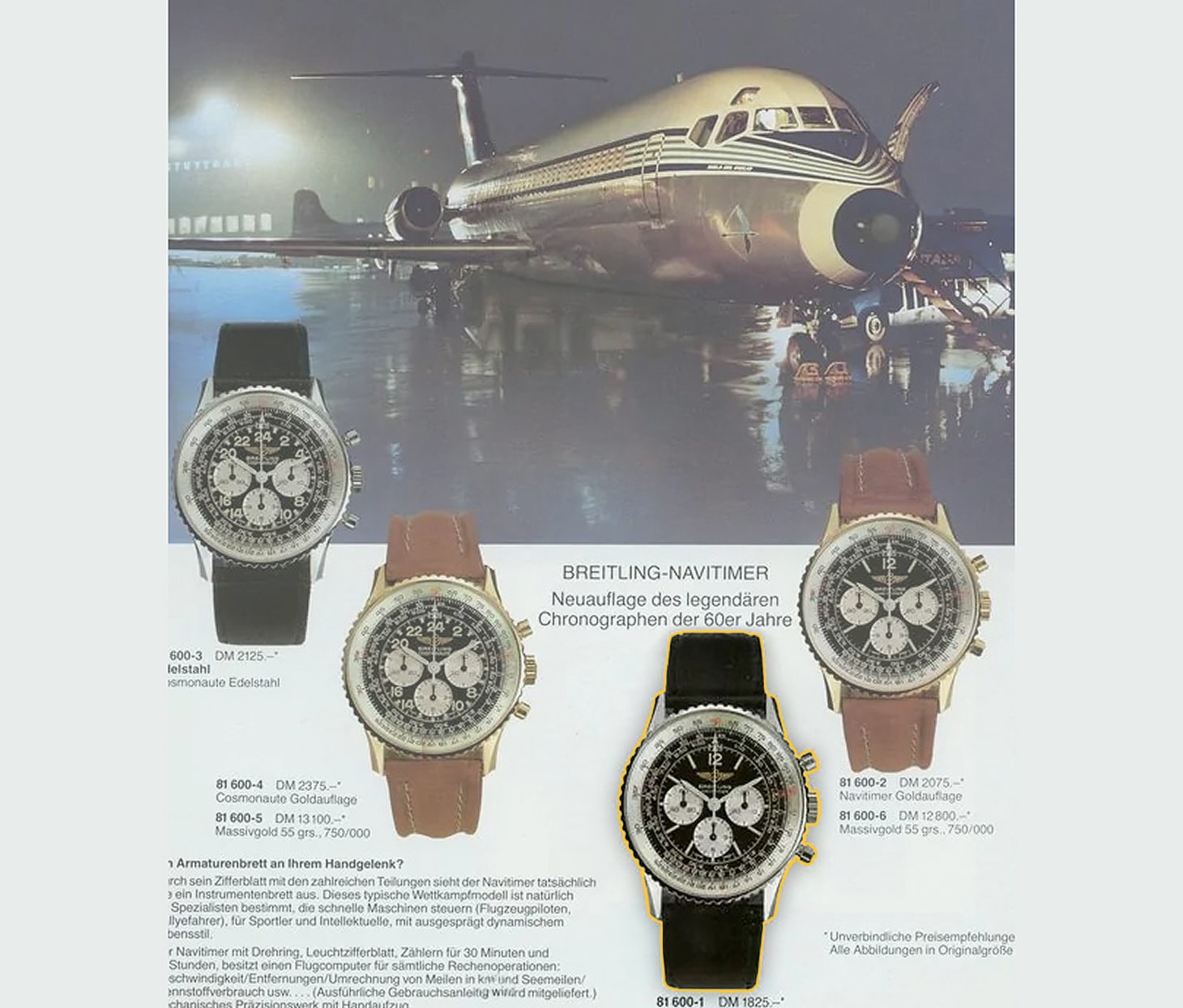

Navitimer
THE ULTIMATE WRIST-WORN INSTRUMENT FOR PILOTS
THE NAVITIMER: AN ICON IS BORN
In 1952, Willy Breitling was approached by the world’s largest pilots’ club, the Aircraft Owners and Pilots Association (AOPA), and asked to create a new chronograph for its members. His answer was the Navitimer—a wrist-worn instrument that would enable pilots to perform all necessary flight calculations, including average speed, distance traveled, fuel consumption, rate of climb or descent, and conversion of miles to kilometers or nautical miles. At that time, all these calculations required a logarithmic slide rule.
To create it, Willy adapted the original logarithmic slide rule of the 1940s Chronomat for aviation purposes and integrated it into a rotating bezel, surrounded by small beads to make it easier to manipulate. At 41mm, the case was unusually large for the time, ensuring maximum legibility. Oversized Arabic numerals coated with luminescent radium provided excellent contrast against the black dial. The name “Navitimer”—a combination of “navigation” and “timer”—perfectly captured the essence of the pilot’s tool watch.
The original version designed for AOPA bore no Breitling branding on the dial and was exclusively distributed to AOPA members. In late 1955, the Navitimer was released to the public with the Breitling name and a stylized winged logo distinct from the AOPA version. This original model was then retroactively assigned its now-iconic reference number: 806.
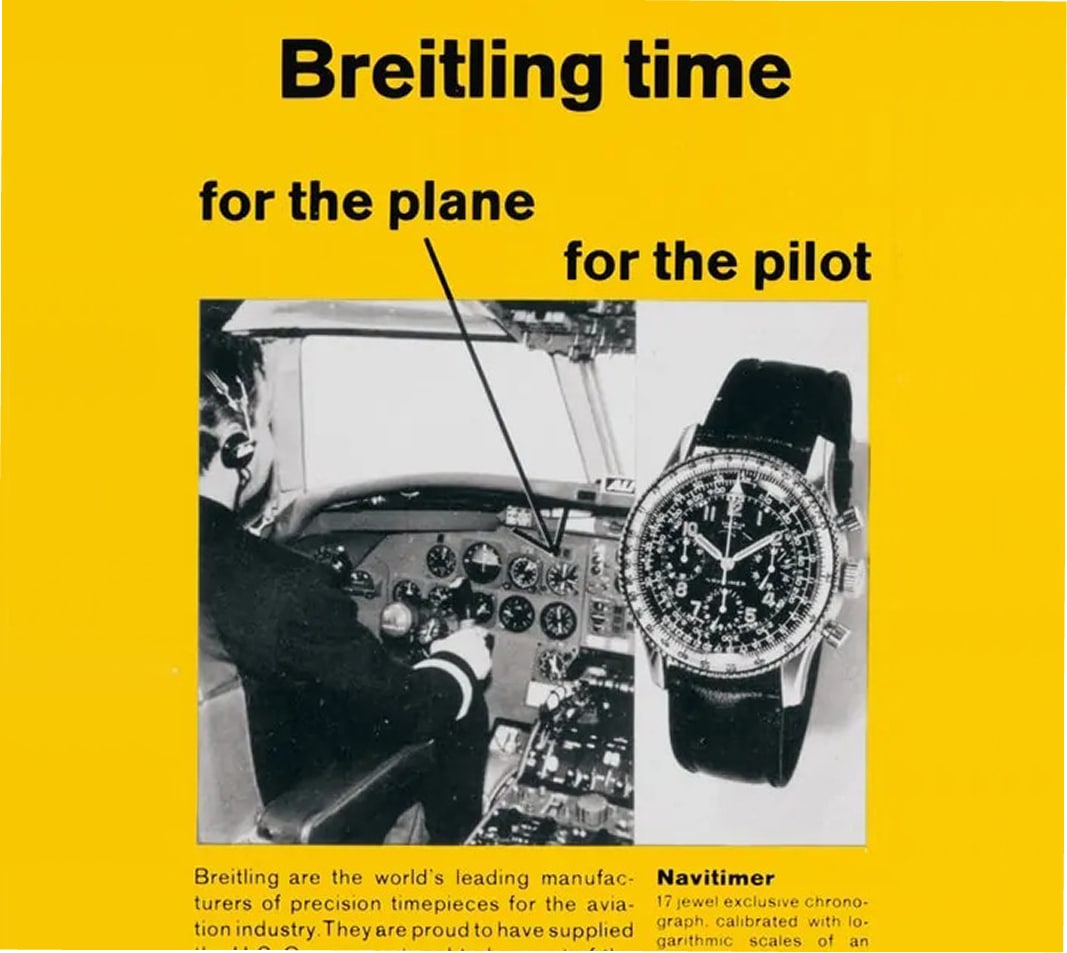

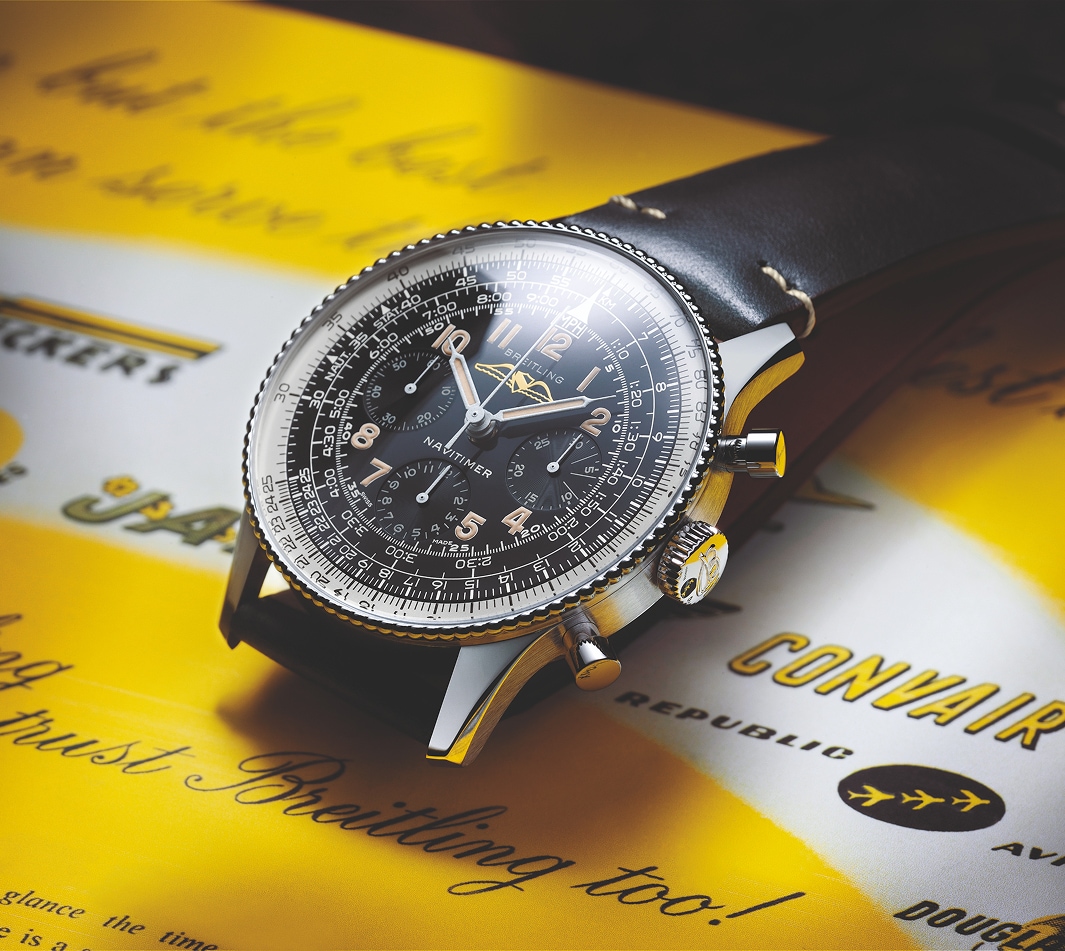

An easy way to distinguish an AOPA-issued Navitimer is by its logo. Dials featuring the winged AOPA insignia were reserved for association members, while stylized but unsigned wing logos indicated commercial use. One of the most iconic designs from 1959 was re-issued in 2019 as the first Breitling historical re-creation: the Navitimer ref. 806 1959 Re-Edition.
THE “TWIN-JET” NAVITIMER
After a decade of its initial success, the Navitimer received a modern twist in the early 1960s. The dial was changed to feature contrasting white subdials, an aesthetic modification initially launched on the SuperOcean in 1957. Soon after, the bezel evolved from “beaded” to “serrated” and around 1965, the Navitimer received the famous twin-jet logo made of two superimposed aircrafts, while the AOPA logo remained in production.
This refreshed design elevated the “pilots’ favorite chronograph” to new heights and became an unmatched icon after being worn by celebrities such as jazz musician Miles Davis and Formula 1 champions Jim Clark, Graham Hill, and Jo Siffert. From then on, whether on a plane, on a boat, in a car, or even on stage, the Navitimer was everywhere.
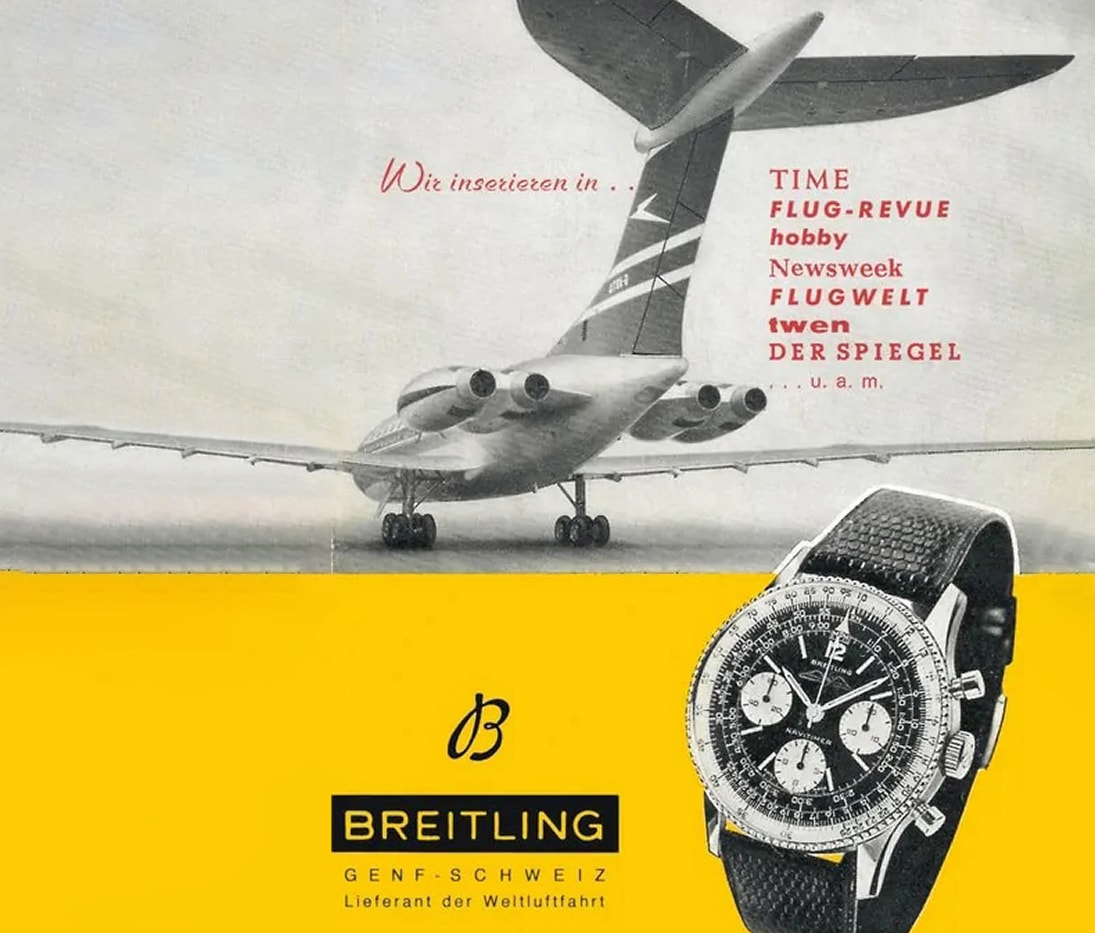

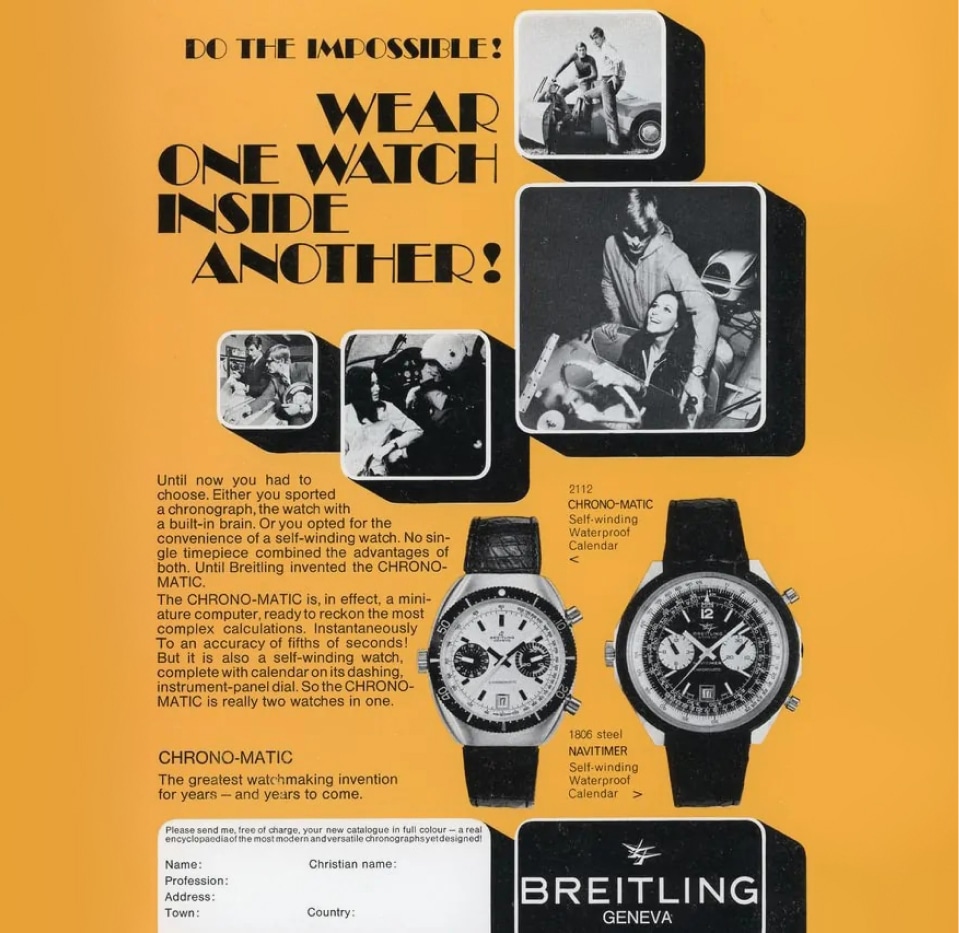

THE FIRST AUTOMATIC NAVITIMER
In the late 1960s, watch wearers had to choose between an automatic watch and a chronograph, but no one had yet found a way to put the two together. To overcome this challenge, Breitling began the ambitious and visionary development of creating one of the first automatic mechanical chronograph calibers. Developed in partnership with Heuer-Leonidas and Hamilton-Buren and Dubois-Depraz, the Breitling Chrono-matic was launched on March 3, 1969 offering two timepieces in one, a mechanical automatic watch and a chronograph—changing watchmaking history forever.
Breitling pushed design boundaries even further when the Navitimer case grew to an unprecedented 48mm. While much larger than most watches on the market at the time, its very short lugs made it surprisingly comfortable to wear—earning it popularity among a younger, more urban, and style-conscious clientele. But the oversized "pizza" case wasn’t just about looks or trends. It was a purposeful design solution to meet a major technical challenge: creating the first Navitimer with an inner slide rule that was also water-resistant to 200 meters. The case was developed by EPSA Piquerez, the leading engineering firm for waterproof watch cases at the time.
Two new timepieces were developed: an automatic version equipped with the revolutionary Chrono-matic caliber (ref. 1806) and a hand-wound version (ref. 816). Both were equipped with the newly patented waterproof rotating bezel. The classic and successful 41 mm Navitimer remained in production and was given a modern and useful date indication in an automatic (ref. 8806) and a hand-wound version (ref. 7806).
In 1986, two modern icons met, as legendary singer Serge Gainsbourg selected the Breitling Navitimer (ref. 81600-1) as his watch of choice. He even incorporated his unique style by wearing the watch on a distinctive rally bracelet crafted from platinum.
